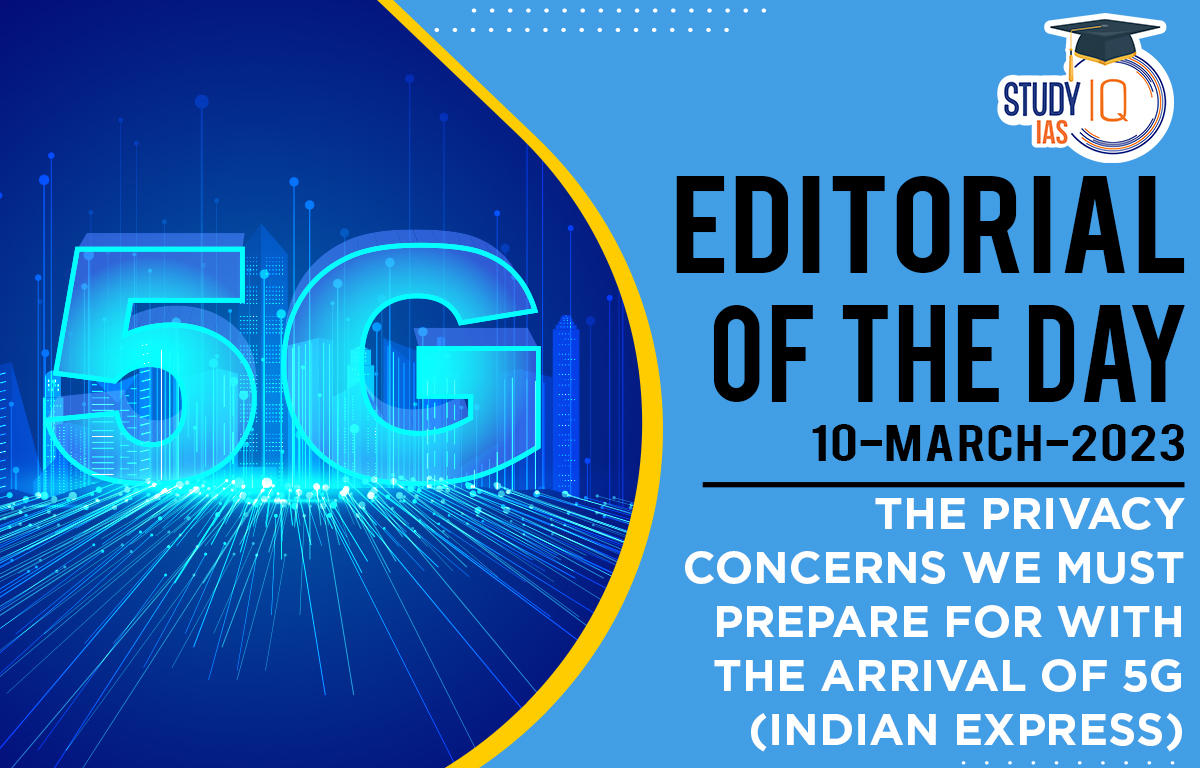Table of Contents
With the arrival of 5G technology, a large number of electronic devices will potentially be connected to the internet, increasing the threat of ransomware attacks.
- The 5G technology has been rolled out across 13 Indian cities in 2022. It aims to provide higher data speeds with ultra-low latency, enhanced capacity and better user experience.
- The increase in the bandwidth will bring our devices online, making them smart. Internet of Things (IoT) devices enabled by 5G will enhance our lives.
- 5G technology will provide faster data analytics, robotics and artificial intelligence. It will be useful in traffic management, drone operations and smart mobility solutions.
- 5G has high security standards, with its encryption features making it impossible for attackers to decode the obtained information. This will protect the confidentiality of interconnected devices.

Security-Related Concerns Regarding 5G Technology
- Inherits existing vulnerabilities: Initially, the 5G technology will be built on existing 4G infrastructure, therefore, it will inherit vulnerabilities of the past.
- Increases scope of cyber attacks: Since more devices are connected to the internet, it increases the scope of cyber attacks. Such attacks can grow exponentially if not contained in time.
- Privacy concerns: Privacy concerns are expected to grow as the number of devices connected to the network increases.
- China-manufactured components: Majority of components used for 5G technology are manufactured in China and were imported before the ban on Chinese components came into effect.
- Manufacturers of such equipment (Huawei and ZTE) have already been blacklisted by countries such as the USA and Canada.
Addressing Concerns Related to 5G Technology
- Even though the development of 5G technology is driven by market forces, governments must remain proactive on the security front.
- There is a need to have a collaborative arrangement between the government, academia and businesses.
- Multi-sectoral collaboration: The existing 5G alliance by C-DOT needs to be scaled up as a Center of Excellence that will include the IITs and Indian Computer Emergency Response Team (CERT-In) or any other national security organisation.
- Testing of features: Telecom companies can be invited to test their 5G infrastructure and ethical hackers can be invited to break into the system, thereby identifying vulnerabilities.
- Security standards: 5G service providers can be rewarded to promote adherence to security standards. Firms can be ranked on their security standards and the government can reward them through tax rebates.
Conclusion
- Concerned authorities must continue to publish advisories for end users in easily understood methods, in order to create well aware consumers.
- However, completely shifting the safety burden to citizens is not desirable. Other stakeholders must take greater responsibility.
- AI technology can help attackers to learn about the defence mechanisms and change their modus operandi. Service providers must take these into consideration.





















 WhatsApp
WhatsApp